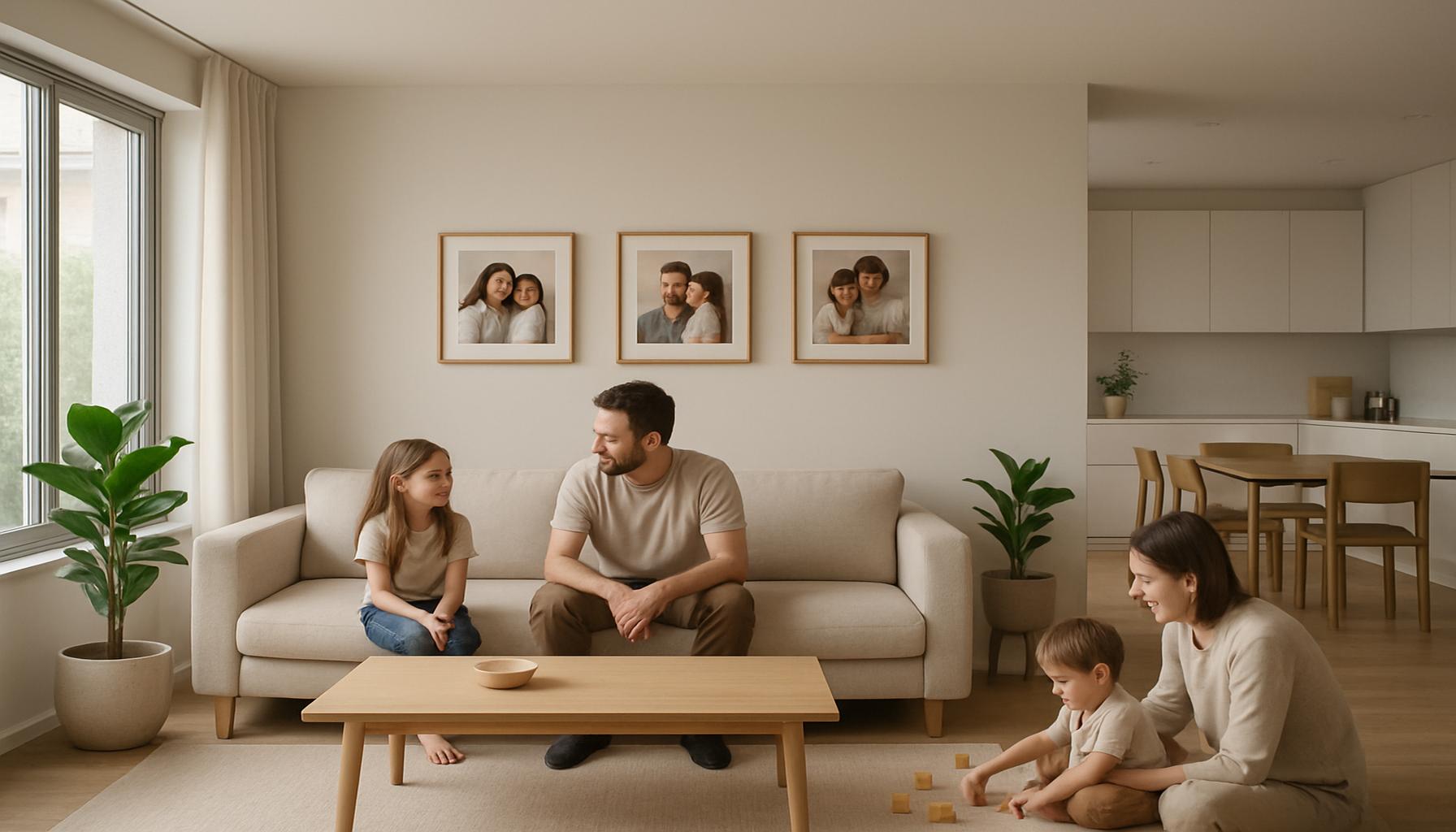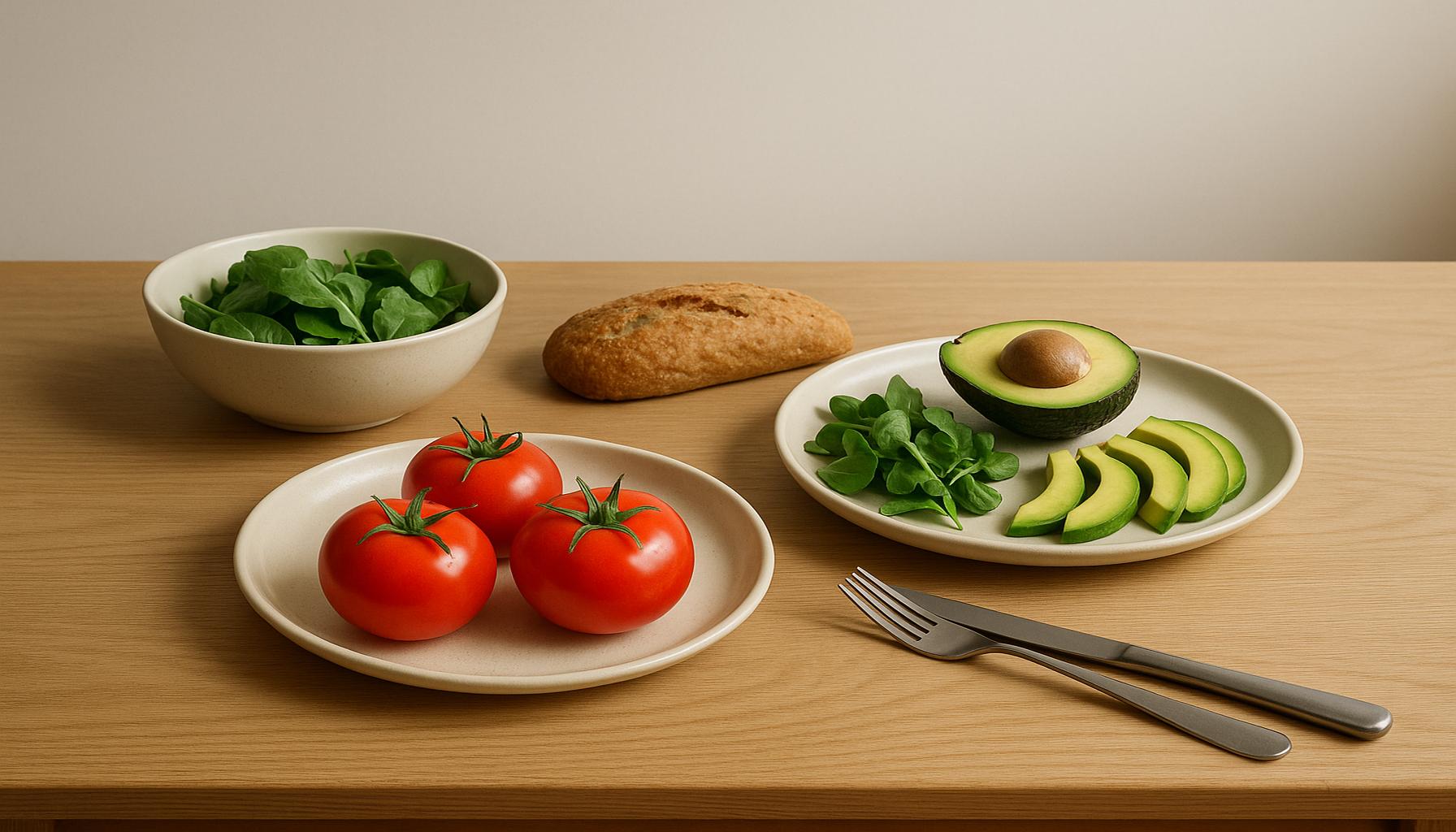Minimalism in the Family: Creating a Simple and Functional Environment for Everyone

The Transformative Power of Minimalism for Families
In an age where materialism often takes precedence over meaningful connections, many families are seeking solace in the principles of minimalism. This lifestyle shift emphasizes the importance of quality over quantity, encouraging families to eliminate excess and create a more harmonious living environment. By embracing minimalism, families not only improve their physical space but also their mental and emotional well-being.
At the heart of minimalism is the act of decluttering. This involves systematically removing items from the home that no longer serve a purpose or evoke joy. For instance, families can start by decluttering common areas like the living room, where items can accumulate quickly. Establishing a routine for yearly or seasonal decluttering can help maintain a streamlined space and keep chaos at bay.
Another crucial aspect of minimalism is mindful consumption. By prioritizing purchases that are durable and necessary, families can avoid the trap of acquiring numerous items that contribute to clutter. An example of this is investing in high-quality toys for children that promote creativity and growth rather than plastic items that quickly break or fall out of favor. This shift in perspective also extends to clothing, electronics, and furniture, leading to a more intentional approach to shopping that enhances sustainability.
Creating functional spaces is also essential in a minimalist lifestyle. This involves designing rooms that cater to multiple purposes, making the most of limited square footage. For instance, a dining area can be transformed into a productive workspace during the day, encouraging family members to coexist comfortably while pursuing different activities. Incorporating furniture that doubles as storage, such as an ottoman that houses games or a dining table with built-in shelves, optimizes space while maintaining a clean aesthetic.
In the United States, the movement towards minimalism has led to numerous documented benefits for families. One significant advantage is reduced stress levels. Clutter can be mentally exhausting, and a clean, organized home allows for a more focused mindset, promoting peace and relaxation. Additionally, a decluttered home fosters better organization, making it simpler for families to locate everyday items. The easier accessibility creates a more efficient household environment, saving time and minimizing frustration.
Moreover, simplifying life can lead to increased quality time for families. Without the distractions of excessive belongings or endless to-do lists, family members can engage in meaningful interactions, whether it’s shared meals, game nights, or outdoor adventures. These moments, supported by a minimalist environment, cultivate deeper bonds and a greater appreciation for one another.
As we continue this exploration of minimalism, it is crucial to remember that each family’s journey will be unique. Tailoring these principles to suit individual needs and lifestyles is the key to finding harmony in family living. In the hidden narratives of those who have made the switch, lies inspiration and insight that can illuminate your path to a more fulfilling, minimalist life. Join us as we uncover practical strategies, share personal stories, and delve into the impactful journey of minimalism.
DISCOVER MORE: Click here to learn how minimalism can enhance your efficiency
Decluttering: The First Step Towards a Minimalist Family Life
To embark on a successful minimalist journey, families must first confront the overwhelming presence of clutter in their homes. Clutter isn’t just a physical issue; it’s a mental and emotional burden that can impact the well-being of every family member. Studies have shown that a cluttered home can lead to increased stress levels, making it essential to tackle the issue head-on. The process of decluttering serves as both a practical and symbolic step in creating a more peaceful environment.
The key to effective decluttering is a systematic approach. Families can utilize various strategies to simplify this process, ensuring it feels manageable rather than daunting. Here are some popular techniques to consider:
- The KonMari Method: Introduced by Marie Kondo, this method encourages individuals to keep only those items that “spark joy.” Family members should assess each item with this principle in mind, facilitating a more profound emotional connection to belongings.
- The Four-Box Method: Label four boxes as “keep,” “donate,” “trash,” and “sell.” As families go through their possessions, they can place items in the appropriate box, simplifying decision-making and visualizing the decluttering progress.
- Room-by-Room Approach: Tackle one room at a time to avoid overwhelming feelings. This focused strategy can lead to quick wins, boosting morale and encouraging the family to continue the decluttering journey.
Once the decluttering process is underway, families often find that the immediate benefits extend beyond the physical space. A decluttered environment fosters greater mindfulness and presence. It allows each family member to appreciate their surroundings and enjoy the little moments that often go unnoticed amid chaos. Decluttering is not merely about reducing the number of items, but also about enhancing the way a family interacts with their space, promoting a sense of ownership and pride.
Moreover, the act of letting go can serve as a valuable lesson for children in understanding responsibility and gratitude. Involving kids in the decluttering process can teach them about the value of their belongings and the importance of thoughtful consumption. The family can hold discussions about what items are most meaningful, allowing children to express their preferences and understand how to make informed decisions in the future.
As families move deeper into the minimalist lifestyle, it’s essential to remember that every family has different needs and values. By setting personal goals and creating a tailored decluttering plan, families can find success that resonates with their unique circumstances. This mindset shift not only transforms their physical environment but also lays the groundwork for stronger family bonds and a more fulfilling life.
In the next sections, we will explore how to implement mindful consumption and create functional spaces that enhance family living. Together, these principles will help solidify the foundation of a minimalist lifestyle that is both practical and enriching.
| Advantage | Description |
|---|---|
| Enhances Family Bonding | A minimalist environment fosters quality time by reducing distractions, allowing families to focus on activities that strengthen their relationships. |
| Promotes Stress Reduction | A clean and organized space minimizes clutter, leading to lower anxiety levels and a calming atmosphere conducive to relaxation. |
Minimalism in the family context extends beyond mere aesthetics; it is a lifestyle choice that significantly affects mental health and social dynamics. By reducing items and focusing on functionality, families can embrace a peaceful environment. Studies show that a simplified space can lead to better communication among family members, as the absence of clutter allows for fewer distractions. Moreover, the practice of minimalism can also be an opportunity for families to declutter not just their physical items but their emotional baggage as well. This simplification process often encourages individuals to let go of unnecessary stressors and fosters an environment where children learn the value of experiences over possessions. This focus on minimalism can serve as a foundation for nurturing family values that emphasize connection, mindfulness, and sustainability. As families delve further into minimalism, they often discover creative solutions that enhance their everyday lives, paving the way for more cohesive family interactions. The transition may require an initial effort, but the long-term sociocultural benefits make it a worthy endeavor that invites profound transformational experiences.
DIVE DEEPER: Click here to discover more about mindfulness
Mindful Consumption: Making Intentional Choices for a Minimalist Family
As families navigate the journey of minimalism, mindful consumption becomes a critical focal point. This concept encourages families to evaluate their purchasing habits, ensuring that each item brought into the home aligns with their minimalist values. In a society that often champions consumerism, cultivating awareness about what we buy can be transformative for family dynamics and overall well-being.
To practice mindful consumption, families should begin by establishing a clear set of values and priorities. This may involve discussions around what is truly necessary for daily life and what items hold sentimental or practical value. Engaging in these conversations not only fosters a shared vision but also helps family members, especially children, grasp the significance of intentional decision-making.
One useful method for ensuring that purchases align with minimalist values is the 30-Day Rule. This rule encourages families to wait at least 30 days before buying non-essential items. During this period, they can assess whether the desire for an item is a fleeting impulse or a genuine need. This pause can prevent the accumulation of unnecessary clutter and emphasize the importance of thoughtful purchasing.
- Quality Over Quantity: When considering new items, families should prioritize quality over quantity. Investing in durable, versatile products that fulfill multiple roles minimizes waste and reduces the frequency of purchases.
- Secondhand Shopping: Embracing secondhand items can be both a sustainable choice and a way to find unique treasures. Thrift stores, garage sales, and online marketplaces offer myriad options that align with the minimalist ethos while also saving money.
- Giving Back: When acquiring new items, families can consider a commitment to donating or selling a similar item. This practice reinforces the cycle of mindful consumption and encourages continuous decluttering.
Mindful consumption enriches family life in more ways than one. It encourages reflection on how material possessions contribute to happiness and can lead to a deeper appreciation for what is already owned. By celebrating experiences over things, families can foster meaningful memories through shared activities rather than accumulating more physical items.
Moreover, children involved in the mindful consumption process learn valuable lessons in financial responsibility. Teaching kids about budgeting, comparative shopping, and the impact of their choices helps them grow into conscious consumers. By engaging children in discussions about advertising, branding, and the environmental implications of overconsumption, families can cultivate a sense of social awareness and responsibility from a young age.
As families redefine their relationship with possessions, it is essential to create functional spaces that reflect their new values. This involves rethinking how spaces are utilized to support family activities while minimizing distractions. For instance, creating designated areas for play, work, and relaxation can help maintain a sense of order that promotes mental clarity.
Utilizing multi-functional furniture is an effective way to maximize space while adhering to minimalist principles. Items like storage ottomans, expandable tables, and wall-mounted shelves can create an environment that is both efficient and aesthetically pleasing. These deliberate choices not only facilitate a more organized home but also encourage children to embrace a lifestyle that values simplicity and functionality.
DISCOVER MORE: Click here to enhance your organization skills
Conclusion: Embracing Minimalism for Family Harmony
In an age of excess and constant distraction, minimalism offers families a refreshing path towards simplicity and functionality. By intentionally reducing clutter and evaluating consumption habits, families can cultivate an environment that prioritizes well-being, meaningful interactions, and shared values. Embracing a minimalist lifestyle is not just about getting rid of possessions; it’s about nurturing a mindset that values experiences over things, fostering a deeper connection among family members, and enhancing overall life satisfaction.
Through thoughtful discussions around intentional choices, families can establish a clearer understanding of their needs and priorities. The adoption of practices like the 30-Day Rule not only curbs impulsive purchases but also instills a sense of financial responsibility in children, shaping them into conscious consumers. By leveraging multifunctional spaces and furniture, families can achieve an organized and harmonious home that supports their daily activities, encouraging creativity and collaboration.
Ultimately, minimalism in the family is about creating a supportive environment where each member can thrive. As families embrace this journey, they can fortify their relationships and foster a culture of gratitude and mindfulness. By committing to a minimalist lifestyle, families not only change their living spaces but also cultivate an enduring legacy of simplicity, awareness, and connection. For those looking to embark on this transformative journey, the path to a simple, functional, and fulfilling family life awaits—one conscious choice at a time.


